Guide books aren’t much use in Berlin at the moment if you’re trying to work out where to see what in the city’s main museums and art galleries. Everything is being reorganised: some galleries like the Neue Nationalgalerie – the main gallery for modern art – are closed for refurbishment, while the extensive programme renovation and reorganisation of the five monumental buildings on Museum Island and the massive project to rebuild the Berlin Schloss as the Humboldt Forum continues.
Only in Berlin for four days, we had to make some hard choices about what to see, a task made more difficult since even the most recently-published guide book couldn’t keep up with developments. We decided to make a quick visit to the Gemäldegalerie (Paintings Gallery) since it’s just a stone’s throw from the Berlin Philharmonie, where we intended to attend oner of the free Tuesday lunchtime concerts of chamber music – and because it houses treasures by favourite artists such as Albrecht Dürer, Vermeer, Holbein and Rembrandt.
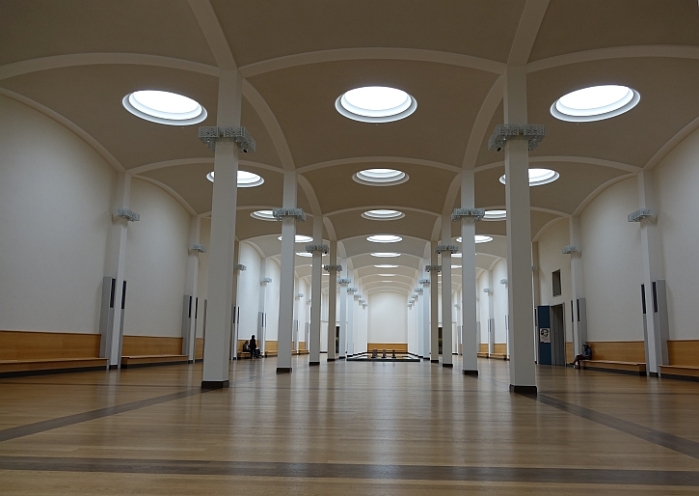
The Gemäldegalerie houses one of the world’s finest collections of European art from the 13th to 18th century, including masterpieces by artists such as van Eyck, Caravaggio, Rubens, Vermeer and Rembrandt. It’s vast: 72 rooms covering almost two kilometres in an elegant modern building designed by Ludwig Mies van der Rohe and opened in 1998.

The Gemaldegalerie is a key element of the Kulturforum, intended as a modern answer to Museum Island, but which currently is a rather desolate area that feels more like an abandoned car park surrounded by modern buildings of various architectural forms. Among the cultural institutions housed here are the New National Gallery (currently closed), the Berlin Philharmonic Hall, Berlin State Library – and the Gemäldegalerie.
Gallery: Durer in the Gemäldegalerie
So vast is the Gemaldegalerie that we had to be selective. First stop was the gallery containing works by Albrecht Dürer. They consist primarily of portraits in oil that – along with similar portraits by the artists of the Northern Renaissance – fascinate me for their photographic verisimilitude and waht they reveal about the social order and cultural values of the time.
Dürer was one of the first artists to create portraits. He once remarked that ‘the most noble sense of man in his face’. There’s a portrait of Frederick III, Elector of Saxony, known as Frederick the Wise, who became Elector in 1486 and was Dürer’s first major patron. The portrait was probably done when Frederick visited Nuremberg in April 1496. Frederick, then 33, is depicted from the waist up, elegantly dressed and with a slight frown, probably intended to convey fortitude.
Nuremberg was Dürer’s home town, so it’s not surprising to come across portraits that were clearly painted on commission for local notables. There are several examples in the Gemaldegalerie, including two portraits of daughters from a wealthy Nuremberg family, the Fürlegers. Portrait of a Young Woman with Her Hair Done Up, painted in 1497, is of Katharina Fürleger, then a young girl 18 years of age. She is wearing her hair up in large braids wrapped around her head, which often signified that a woman had reached marriageable age or was betrothed. The wooden window post on the frame of the window is decorated with a carving of a robed man who is reading a book on which is painted the monogram which Dürer added to all his works. The parchment which can be seen fixed to the wall to the right of her head, bears an inscription which is not visible on the painting today, but which a contemporary engraving reveals was originally worded: ‘This was my appearance when eighteen years old in 1497.’
There is a marked contrast between the portrait of the woman with her hair up and Portrait of the Young Fürleger with Loose Hair, also painted in 1497. Whereas the former includes a a countryside landscape seen through a window, in this portrait there is no such view of the world outside, and the painting has a sombre and rather dark tone. Art historians interpret the first portrait as being one of a woman who openly welcomes the world and who is either open to offers of betrothal or is indeed already betrothed. In contrast, her sister appears to have renounced the world and its temptations, perhaps deciding to pledge her life to Christ’s work in a convent. Her pose is devout: her head lowered and her hands clasped in prayer as she avoids our gaze. Her clothes are plain and the neckline of her chemise is high, in complete contrast to the plunging neckline of the dress worn by her sister.
The portraits of Jakob Muffel and Hieronymus Holzschuher were also both painted in Nuremberg – but on a later occasion, in 1526. Jakob Muffel was burgomaster of the city and Holzschuher was a local patrician and senator. Since both paintings have the same dimensions it has been speculated that they might have been commissioned to be exhibited in the town hall.
Another Nuremberg painting is Portrait of a Young Girl with Red Beret, done in 1507. This small image of a girl with soft, curly blond hair, dreamy eyes, and wearing a red beret worn sideways with a jaunty air was in the collection of the Imhoff family of Nuremberg until 1628. Exactly who it’s a portrait of is unclear – there’s even a suggestion that the ‘girl’ might be a boy, a possible reflection of Dürer’s sexual inclinations.
The Portrait of a Young Venetian Woman was one of several high society portraits painted by Dürer during his second visit to Italy. The identity of the sitter is lost, but her dress and hairstyle suggest that she is Venetian.
The Portrait of Jakob Fugger depicts a member of the powerful banking family, based in Augsburg but operating chiefly from Antwerp. International mercantile bankers and venture capitalists, the Fuggers controlled much of the European economy in the sixteenth century and accumulated enormous wealth. Dürer portrays Fugger wearing a finely embroidered hat on his head, and a wide coat with fur-lining, reflecting his wealth and social status.

Paintings from the Northern Renaissance, including works by Vermeer, Holbein, and Rembrandt, form a major part of the Gemaldegalerie collection. There are also two key works by Pieter Bruegel the Elder which I will discuss in another post.
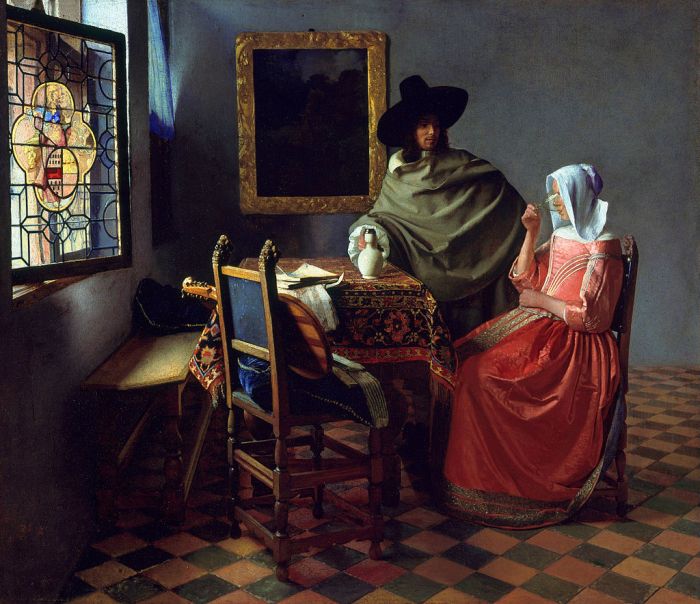
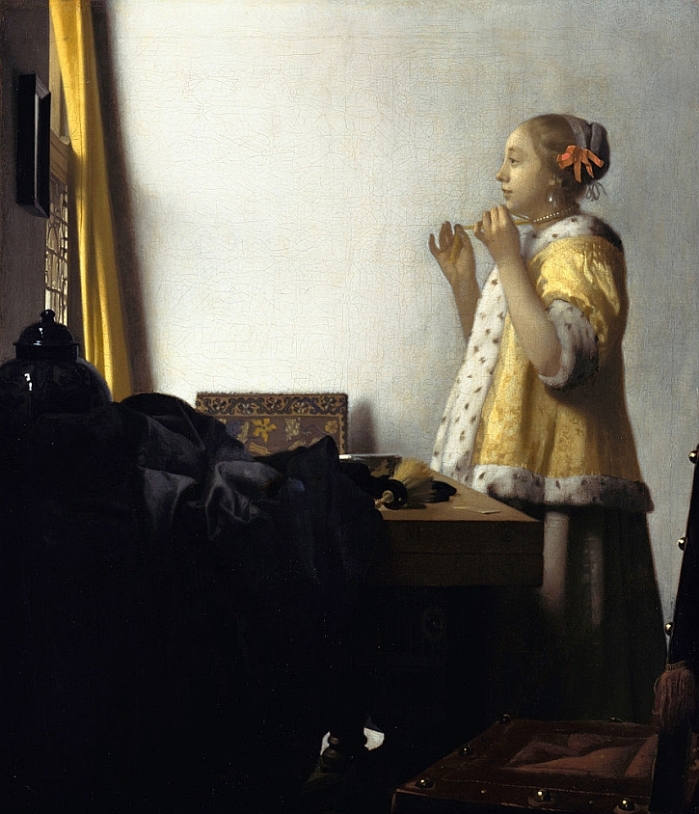
There are two Vermeers in the gallery’s collection, but unfortunately Young Woman with a Pearl Necklace had been removed, presumably for an exhibition elsewhere. However, The Wine Glass offered a heady compensation. It’s typical of the genre paintings of the mid-17th century Delft School most associated with Pietr de Hooch with their images of domestic life in bourgeois households and courtyard views.
Here, an elegantly dressed man is watching a woman finish a glass of wine. He has his hand on a jug, and seems to be waiting to refill the glass. Vermeer doesn’t suggest much about the nature of this couple’s relationship: it’s not clear whether the glass of wine will lead to further sinfulness, as was often suggested in similar paintings of the period.
In fact, the way that Vermeer has staged the scene suggests nothing improper in this courtship scene. The young woman holds the glass by the stem in the manner considered dignified and proper at the time, while being both discreetly capped and elegantly dressed. But, Vermeer does provide some symbolic hints. The chitarrone on the chair, an instrument that frequently occurs in his pictures, symbolizes both harmony and frivolity. The window pane with the coat of arms also shows a woman holding a bridle, an attribute of temperantia, or moderation.
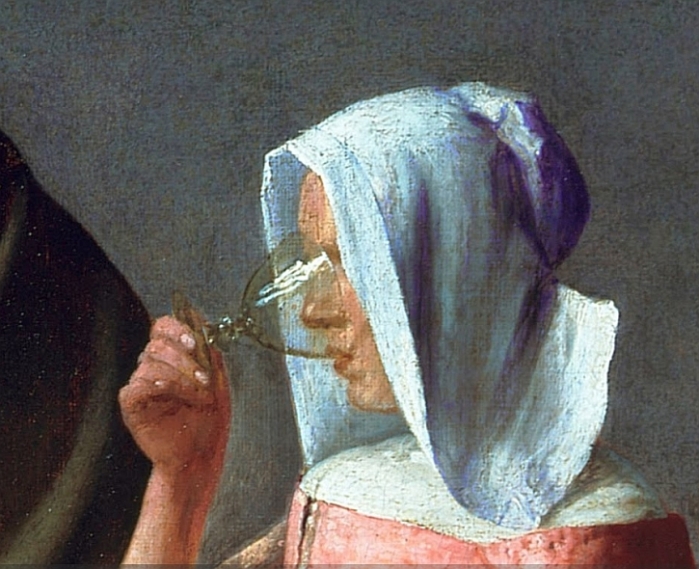
Apart from the symbolism – lost to us now, unless we read art historians’ analyses of the painting – it might just be that it’s the wine glass which is the real subject of the painting: a challenge to the artist in how to depict in oils the transparency of glass and the fall of light on crystal. There is a detailed discussion of the painting here.
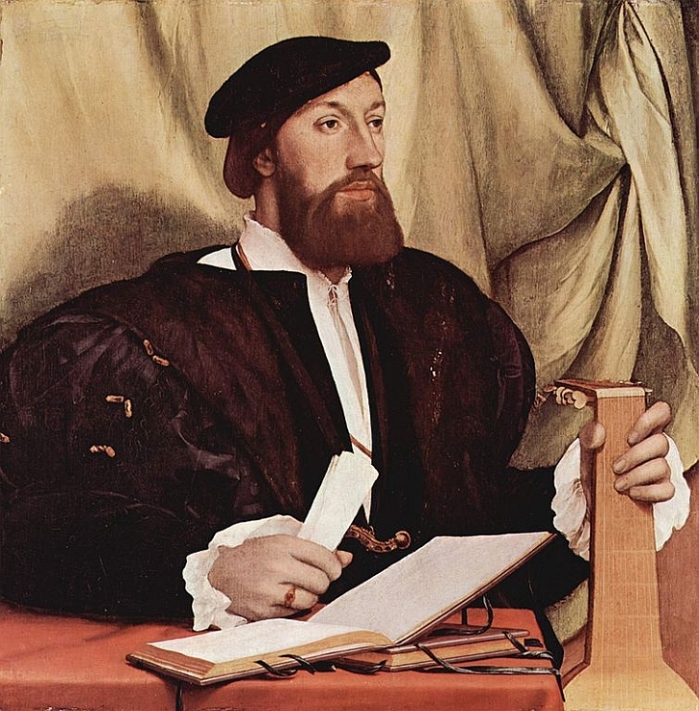
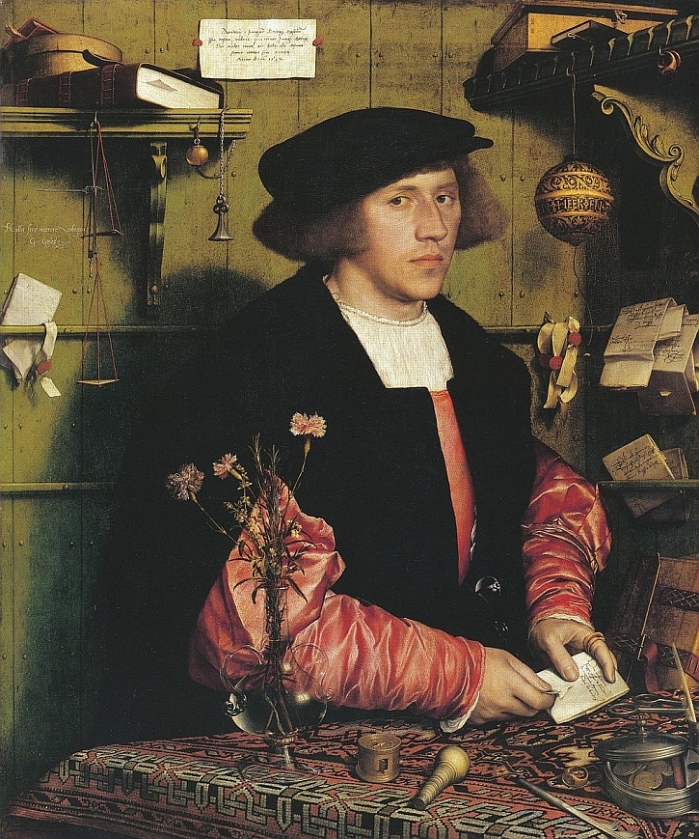
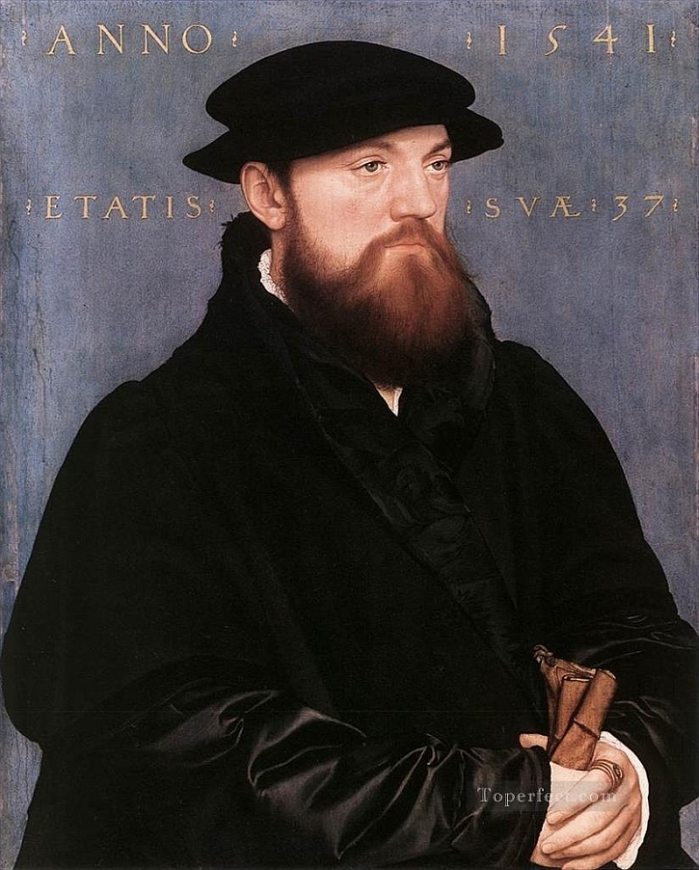
Shifting back a century or more – closer to the time of Dürer – we find three magnificent portraits by Hans Holbein. Painted a year after his famous portrait of Thomas Cromwell, Portrait of Man with Lute presents an unkown man who, some experts suggest, may have been a leading musician at Henry VIII’s court. The king was a keen musician and amateur composer and rewarded such figures well; to be afforded the distinction of a Holbein portrait could be seen as an official seal of approval.
There’s no mistaking who the man in the next painting is since the name Georg Gisze appears several times in handwriting on the documents attached to the wall. The letter in the merchant’s hand indicates that he has been corresponding with a brother in Germany. Georg Gisze was was born in Danzig in 1497, the son of an alderman. Holbein painted him in London in 1532. Three years later Gisze married in Danzig, and it may be that the portrait was commissioned in anticipation of the marriage.
Holbein has probably been instructed by Gisze that his portrait should reveal not only his likeness but also something of his way of life. A Latin couplet above the merchant’s head asserts how faithfully Holbein has rendered Gisze’s external appearances: ‘What you see here, this picture, shows Georg’s features and figure such is his eye in real life, such is the shape of his cheeks.’
But the picture is clearly meant to convey more than outward appearances by underlining the milieu in which the merchant operated. Gisze stands in his workroom, behind a table covered with a richly embroidered cloth,and surrounded by the accoutrements of his trade: keys, signet-rings and a spherical container containing string, a pewter writing-stand with goose-feathers, ink, sand, and sealing-wax, a pair of scissors, a signet-ring and a seal.
Apart from these practicalities, there is sybolism here too: precisely placed in the centre foreground, stands a small table-clock which, together with the fragile glass vase and the perishable flowers, is a reminder of the passage of time. The Venetian-glass vase, containing carnations and other flowers, clearly has a special significance; in the medieval language of symbols the carnation was a sign of betrothal.
De Vos van Steenwijk was a member of a Dutch family: he has been identified through the coat of arms inscribed on his index-finger ring. The portrait utilizes a much simpler composition that is typical of Holbein’s work in the last few years of his life. The rich black of van Steenwijk’s coat is emphasised by being set against the plain blue background.

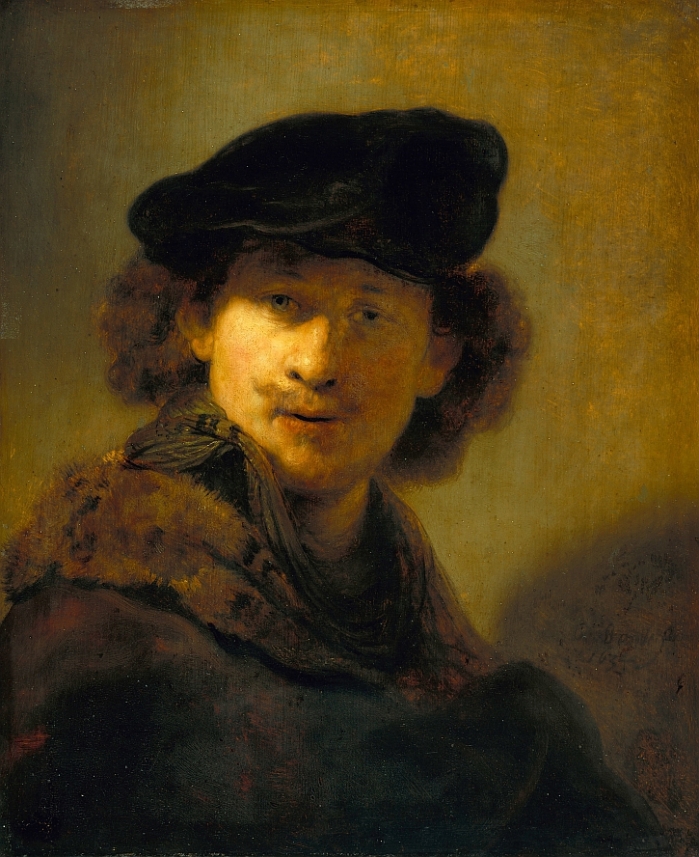
At the heart of the Gemaldegalerie we found the octagonal room in which some sixteen works by Rembrandt are displayed. These include a self portrait in a velvet beret, dating from 1634 when Rembrandt would have been 28 years old, and Portrait of a Young Jewish Man exhibited alongside his Head of Christ, both painted in the same year, 1648.
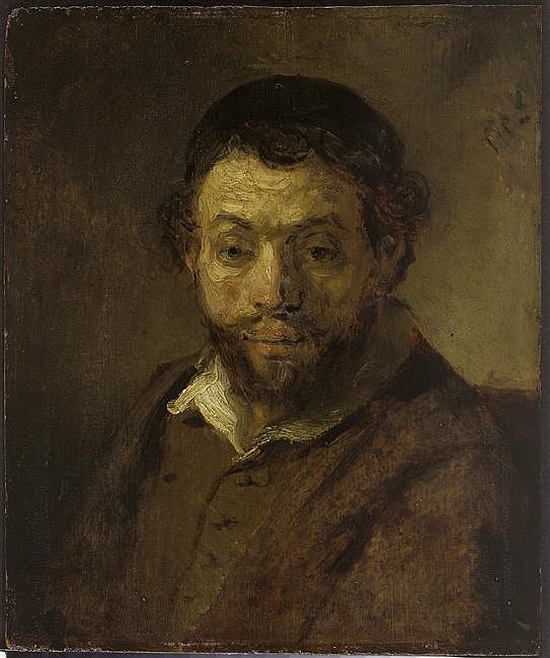
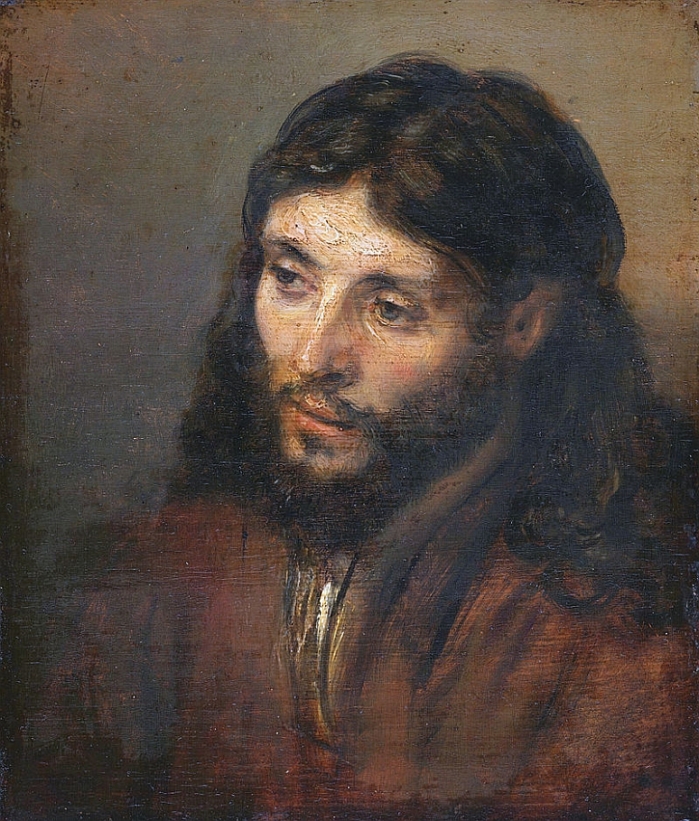
These paintings are a reminder, not only that Rembrandt lived and worked in Amsterdam’s Jewish quarter during the ‘Golden Age’ of the 17th century and that he painted dozens of portraits of Jews – but also that Rembrandt was, in Simon Schama’s words, ‘one of nature’s ecumenicals:
His mother’s family had been Catholic; his father’s desultorily Calvinist. His friends, patrons and sitters were all over the map – Remonstrants, Counter-Remonstrants, Mennonites, and at least two Jews. For that matter, he may have fallen into the unnumbered many in the Dutch Republic who chose to belong to no particular confession at all, save for baptisms or funerals, but whom the state left unbothered.
As for the painting of Jesus: rather than painting an idealized Christian image of Jesus, as was common in Renaissance paintings, Rembrandt painted portraits that are realistic representations of the live models who posed for his paintings. Indeed, some art historians believe that the model for The Head of Christ was a young Sephardic Jew.

Leaving the Gemaldegalerie, we only had to cross the desolate open space which currently surrounds the building to get to the Berlin Philharmonie. There were no tickets available for evening performances while we there, but every Tuesday lunchtime, from September to June, the Philharmonie stages concerts of chamber music entirely free of charge.
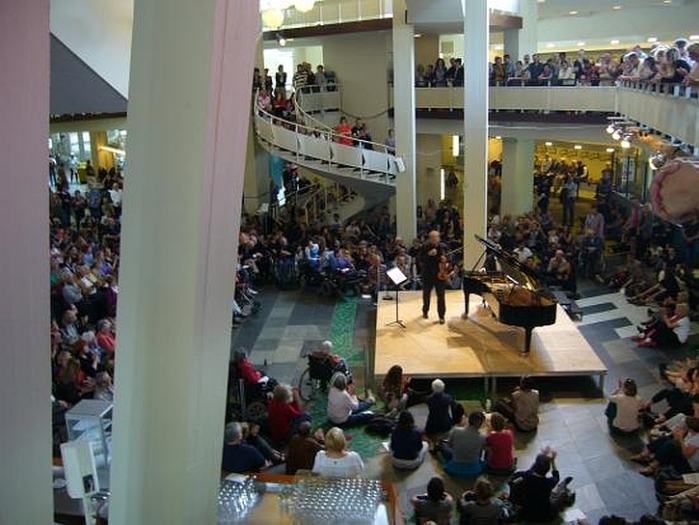
Everything is completely informal: you find a place to sit on the floor of the foyer or on the stairs. Those in the know come prepared with cushions. Although the foyer can accommodate 1,500 people at these events, places are snapped up fast: we arrived just as they were opening up at midday for the concert at one o’clock, but a long queue already snaked around the front of the building.
Each visitor is given a chip at the entrance to the building which is then handed back as you enter the foyer. You’re immediately aware that you’re in a remarkable and highly unusual building – the foyer consists of wide spaces and and layered levels, connected by many stairs. There is a restaurant and a cafeteria where a lucky few will have obtained a seat.
On 16 June we heard Martin Stegner, viola, and Tomoko Takahashi, piano, perform two pieces by Benjamin Britten – Reflection for viola and piano and
Lachrymae, Reflections on a Song of John Dowland – plus Paul Hindemith’s companion piece, the Sonata for viola and piano op. 25 No. 4.

The building opened in 1963 and was designed by the German architect Hans Scharoun, an exponent of the expressionist group Die Brücke and a proponent of organic architecture. This is reflected both inside and out. Outside it’s a tent-like structure in gold cladding, while inside, instead of positioning the musicians at the front of the audience, Scharoun placed the orchestra in the centre of the hall. The folded, slanting walls and tent-like ceiling apparently result in exceptional acoustics.
Scharoun’s building was the first element of the Kulturforum to be completed in the early 1960s. This new cultural area was characterized by innovative modernist architecture – alongside designs by Hans Scharoun, the currently-closed Neue Nationalgalerie was designed by Mies van der Rohe. It was developed on what was then the edge of West Berlin, after most of the once-unified city’s cultural assets had been lost behind the Berlin Wall.
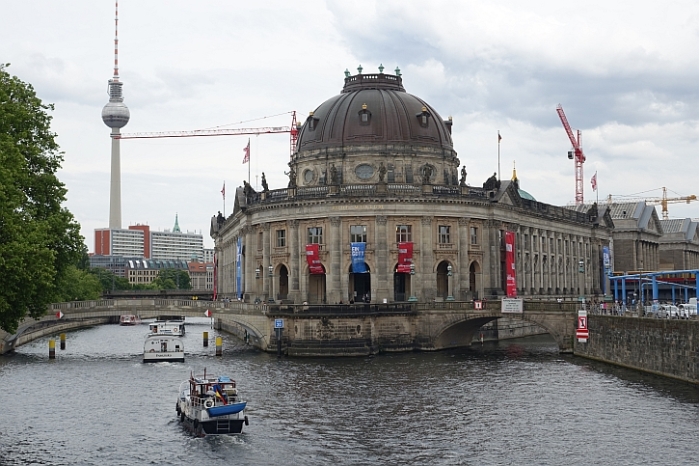
On another day, we explored some of those cultural assets, once lost behind the Berlin Wall. For a decade or more, Museum Island has seen considerable redevelopment and is now the site of Germany’s most ambitious cultural project.
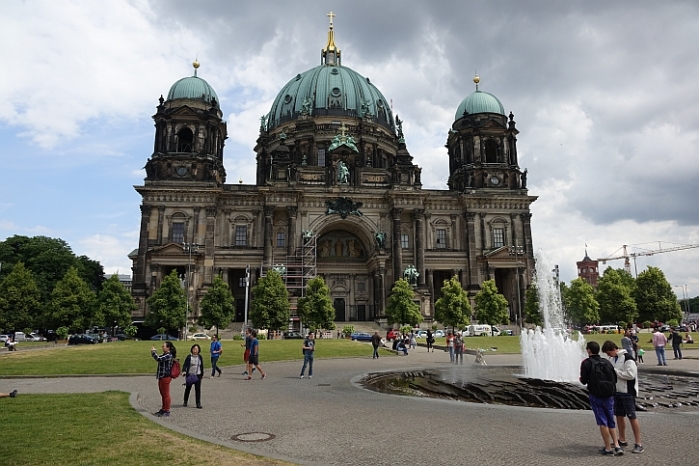
Museum Island – the northern part of an island in the river Spree – contains the Berliner Dom – the Protestant cathedral, a comparative upstart, built in 1905 – and five world-renowned museums clustered together in what is now a UNESCO world heritage site.
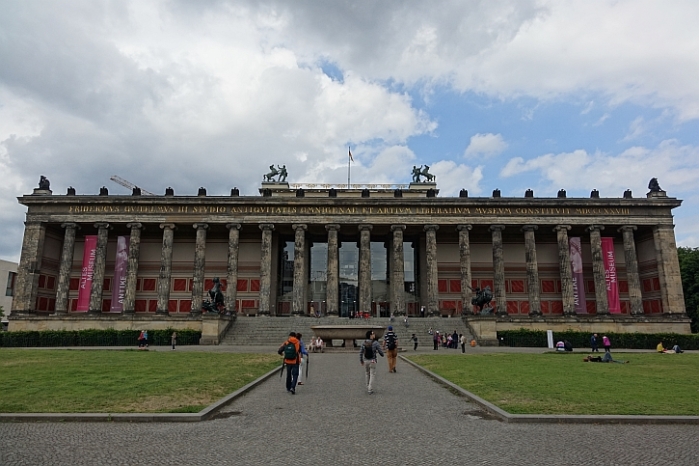
Adjacent to the cathedral is the Altes Museum (Old Museum) in front of which lie the lawns and fountains of the Lustgarten (Pleasure Garden), which started life as a 16th century kitchen garden attached to the Schloss (Palace) that once stood on the side opposite the Altes Museum. In 1713, when Frederick I became King of Prussia and set about converting Prussia into a militarised state, he ripped out the garden and converted it into a sand-covered parade ground.
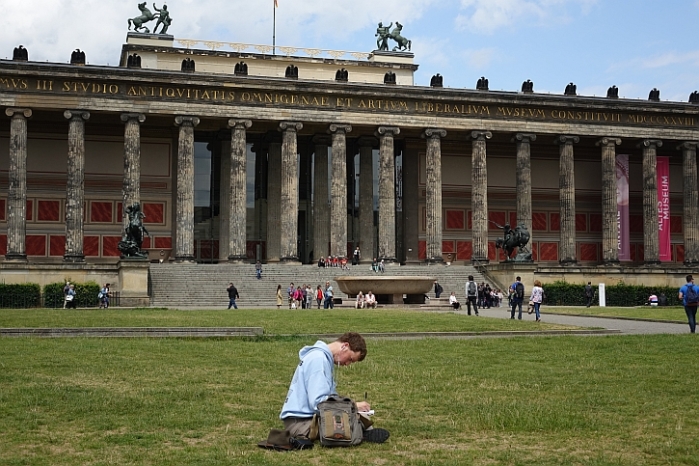
During the Cold War years, the East German state renamed the area Marx-Engels-Platz, and demolished the Schloss, replacing it with the modernist Palace of the Republic.
The five museums of Museum Island are: the Altes Museum (Old Museum) completed in 1830, the Neues Museum (New Museum) finished in 1859,
the Alte Nationalgalerie (Old National Gallery) completed in 1876 (where we saw the ImEx exhibition reviewed here), the Bode Museum, and the Pergamon Museum, constructed in 1930, where we saw the Ishtar Gate of Babylon (currently undergoing some restoration work).
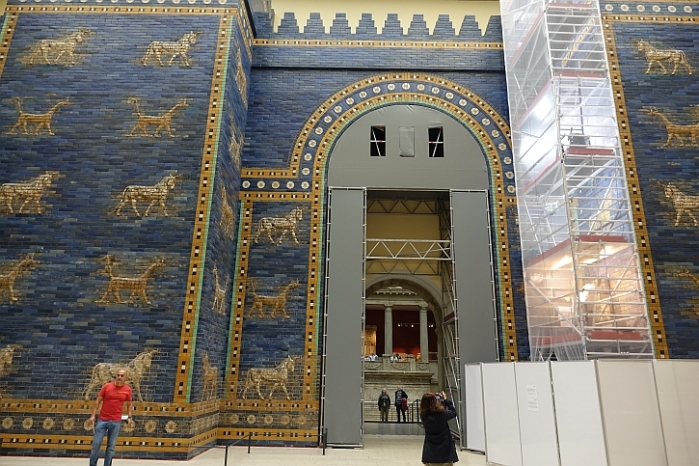
The partial screening-off of the Ishtar Gate while renovation work continues is only one aspect of the confusion that prevails on Museum Island at present. Although we saw many beautiful and fascinating things in the Pergamon, we weren’t able to see the Pergamon Altar exhibit since it’s closed for five years for a complete remodelling of the exhibit hall.Several other museums are partially closed or being reorganised.
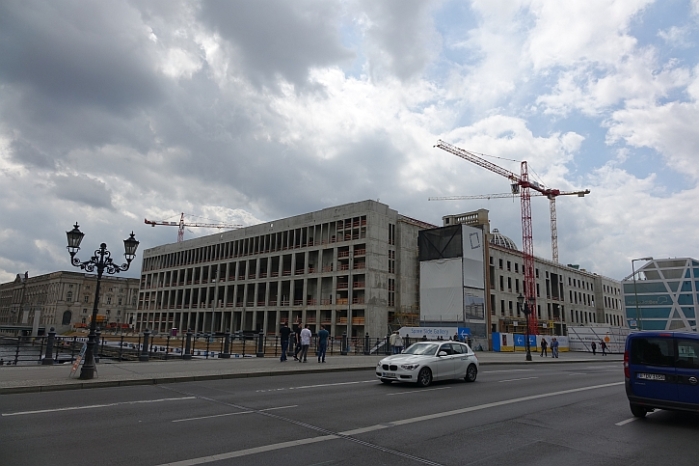
All this is just part of a €1.5 billion plan for Museum Island which will see all the island’s buildings renovated and connected via an underground complex. The Alte Nationalgalerie, the Bode-Museum and the Neues Museum have already been renovated, but the major part of the plan is the project to rebuild the Berlin Schloss as the Humboldt Forum, intended to turn the old Prussian palace into a showcase for the arts and cultures of Asia, Africa, America, Australia and Oceania.
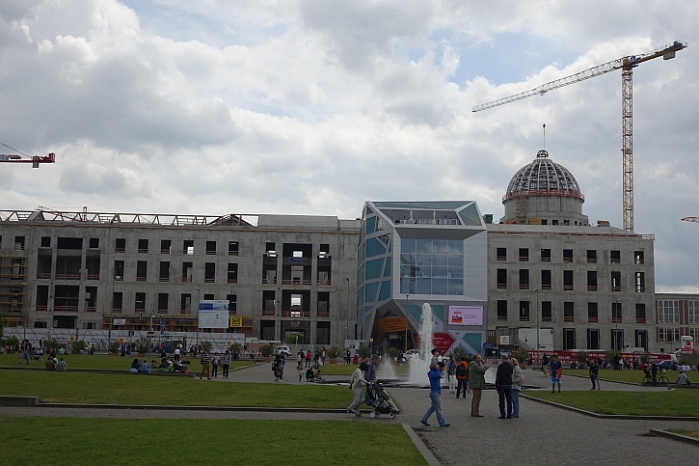
Finally, after seeking out art in Berlin we could return to our hotel room – for even more art. We stayed at art’otel Berlin city centre west which is ‘dedicated to the genius of pop artist Andy Warhol’, each room adorned with selected prints by Warhol. Our room had a Marilyn theme and looked like this:









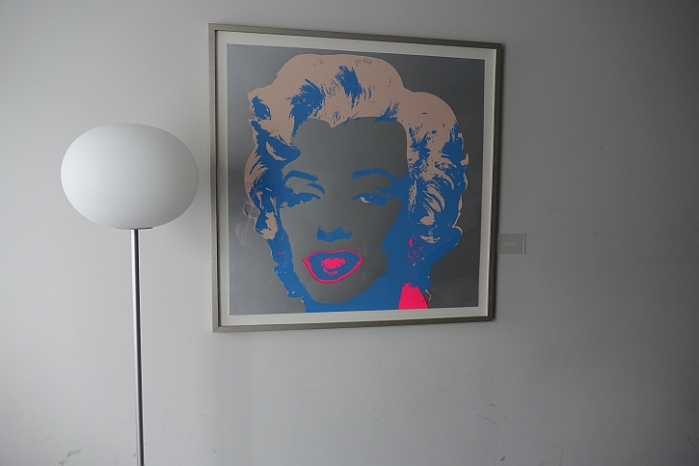
Interesting article Gerry, brought back lots of memories – but why no mention of the Käthe Kollwitz?
Because I had already done a separate post on her here: http://wp.me/poJrg-6pC.
Thanks for the comment, Andy.